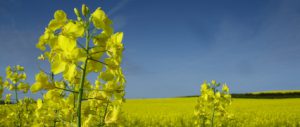[UPDATE: The figures relating to carbon storage in the second paragraph were updated on March 30, 2009]
Reducing emissions of greenhouse gases, mainly carbon dioxide, is a crucial task. Current measures include using technology to improve energy efficiency, planting forests to store carbon and promoting nutrient recycling so that carbon can be used to enrich the soil. The first two techniques are far more costly than nutrient recycling.
Storing 39.28 trillion tonnes of carbon, the oceans (including sea surface, deep sea and marine sediment) are the world’s biggest carbon sink. On land there are about 1.96 trillion tonnes of carbon, contained within vegetation and soil. There are approximately 775 billion tonnes in the atmosphere. Of the land-based carbon, soil is the most important sink: it holds between 1.4 and 2.2 trillion tonnes: two to three times the amount held in the atmosphere. In theory, all of the planet’s atmospheric carbon could be stored in the land, but the soil’s storage capacity depends on how it is used. If forests and grasslands, where the soil is rich in organic carbon, are turned into fields — and those fields are treated with chemical rather than organic fertiliser — the soil will become a source of carbon rather than a store. Appropriate farming techniques can maintain high levels of carbon in the soil, and agricultural land can fix huge quantities of carbon. Carbon can also be found in surface soil in forests, grasslands, marshes, high-altitude wetlands and even farmland.
Carbon storage in the soil mainly means fixing organic carbon from animals, microorganisms and dung. All of these break down to form humus, which is relatively stable. Unfortunately, many countries have a long history of using land, rather than managing it, which has caused the organic content of the soil to deplete. China’s northeast is one of the world’s most fertile regions, but soil degradation, which covers an area of 350,000 square kilometres, has released a lot of fixed carbon into the environment. The region feeds over one-tenth of China’s population, but at a high price. Data from the Chinese Academy of Sciences and research institutions in Heilongjiang province, northeastern China, show that in the last six or seven decades, the depth of fertile soil in the northeast has dropped from between 80 to 100 centimetres to 20 to 30 centimetres. Organic soil content has been reduced from 12% to 1% or 2%, and 85% of the soil lacks nutrients. In Heilongjiang province, 0.6 to 1 centimetre of soil is lost every year and in northeast China’s Jilin province, 42% of the land has only 30 centimetres or less of soil coverage.
There are 1.2 million square kilometres of farmland in China, with an average carbon storage capacity of 1.2 tonnes per square metre. Raising organic soil content by 1% would be the equivalent of absorbing 30.6 billion tonnes of carbon dioxide from the atmosphere. Even if this were to take three decades, one billion tonnes of carbon could be fixed in the soil each year. China’s net annual carbon emissions arising from economic activity are currently around seven billion tonnes, and this is likely to rise to over 10 billion tonnes by 2015. Thus, there is a huge potential for carbon sequestration in the soil, with easy-to-implement technology.
China’s farmland has been worked for millennia and organic content tends to be low; less than half that of similar soil types in Europe. This means there is a greater potential for improvement. Soil in Chinese paddy fields has organic content of 1% to 3%, while 31% of dry fields have less than 1%. Optimistic estimates state that organic content is increasing in 53% to 59% of China’s fields, decreasing in 30% to 31% of the fields and remaining stable in 10%. This suggests an increase of 311 to 401 million tonnes of stored carbon. However, there is huge, and as yet unrealised, potential for carbon storage in China’s soil. Making use of unwanted straw, rather than burning it off every year, would prevent the carbon fixed in crops from being emitted into the atmosphere.
It is clear that increasing the organic content of farmland can significantly reduce atmospheric carbon, but how can we achieve this? I propose that straw is collected at the same time that grain crops are harvested, before being processed and stored in order to provide fodder for livestock. The energy stored in the dung produced by livestock can be used in rural households for methane electricity generation. This would also serve to reduce competition for fossil fuels between rural and urban areas. The waste products of this process are high-quality fertilisers that can be returned to the fields, thus reducing the emissions incurred in manufacturing chemical fertilisers and increasing the organic content of the soil.
Increasing the soil’s organic content will not only fix carbon and reduce emissions, it will also improve the soil’s ability to retain water and nutrients and resist pests and droughts. The result will be larger and higher-quality harvests. Tests show that every 0.1% rise in organic soil content increases potential grain production by between 600 kilograms and 800 kilograms per hectare. Carbon sequestration in the soil will bring about multiple benefits: saving energy, reducing pollution and increasing soil fertility.
In order to achieve these aims, China should develop a straw-fed livestock industry, increasing the use of organic fertiliser and encouraging new rural energy sources while reducing the use of chemical fertiliser and fixed carbon in the soil. China should differentiate the prices of agricultural products for different buyers in order to help 5% to 10% of China’s farmland become organic and free of chemical fertilisers, pesticides, additives or herbicides. Urban residents should pay a premium for organic grain, meat, eggs, milk and vegetables, increasing rural incomes and funding further carbon sequestration. China should promote the use of organic waste as fertiliser, farming without tilling and the decay of organic material in the soil. Full use should be made of traditional agricultural techniques that combine raising ducks and fish with rice farming, or poultry with grain cultivation. Finally, policy support should also be given to carbon sequestration in soil, so that it can ultimately become part of the global carbon-trading system.
Jiang Gaoming is a professor and Ph.D. tutor at the Chinese Academy of Sciences’ Institute of Botany. He is also vice secretary-general of China Society of Biological Conservation and board member of China Environmental Culture Promotion Association. He is known for his concepts of "urban vegetation" and allowing damaged ecosystems to recover naturally.
Homepage photo by go_elsewhere


